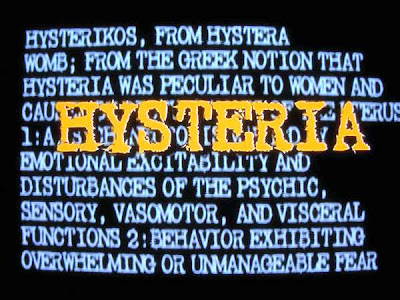Need an orgasm, ladies?

I caught a documentary on cable called, "The O Tapes", which chronicles sexual dysfunction in women (of which 43% of American women suffer from). One of the topics discussed is "Female hysteria", a once-common medical diagnosis, made exclusively in women, which is no longer recognized by modern medical authorities. It was a popular diagnosis in Western nations, during the Victorian era, for women who exhibited a wide array of symptoms including faintness, nervousness, insomnia, fluid retention, heaviness in abdomen, muscle spasm, shortness of breath, irritability, loss of appetite for food or sex, and a "tendency to cause trouble".
 Patients diagnosed with female hysteria would sometimes undergo "pelvic massage" — manual stimulation of the woman's genitals by the doctor to "hysterical paroxysm", which is now recognized as orgasm.
Patients diagnosed with female hysteria would sometimes undergo "pelvic massage" — manual stimulation of the woman's genitals by the doctor to "hysterical paroxysm", which is now recognized as orgasm.
By the turn of the century, the spread of home electricity brought the vibrator to the consumer market. A page from a Sears catalog of home electrical appliances from 1918 includes a portable vibrator with attachments, billed as ”Very useful and satisfactory for home service.”
Over the course of the early 20th century, the number of diagnoses of female hysteria sharply declined, and today it is no longer a recognized illness. Today different manifestations of hysteria are recognized in other conditions such as schizophrenia, conversion disorder, and anxiety attacks.























1 comment:
Why do doctors always get the chicks?
Post a Comment